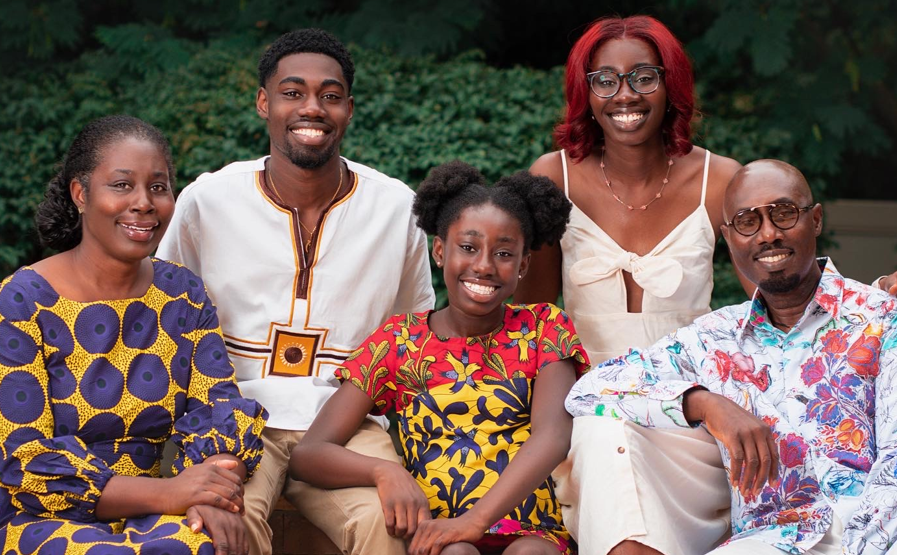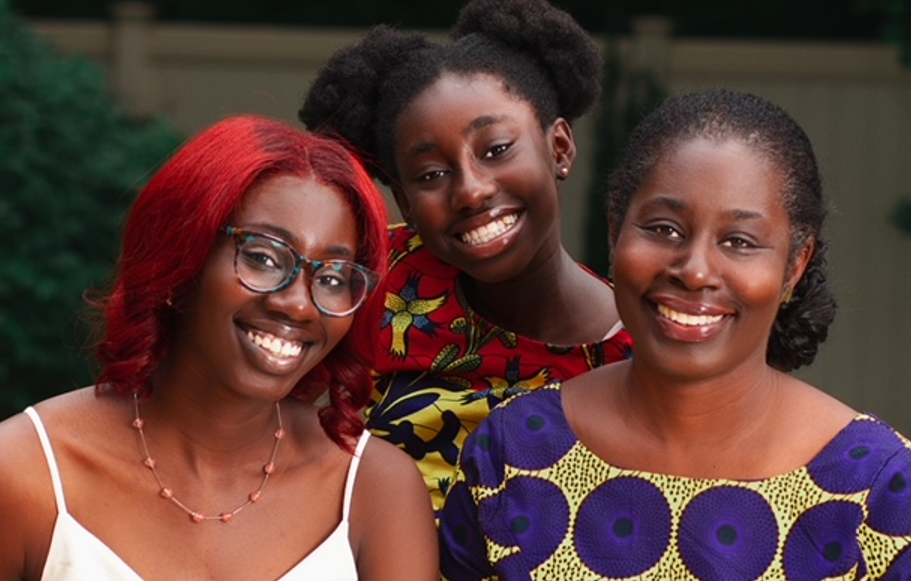“They say that it’s dangerous to make a decision behind a desk. But I’d go on to say that it’s even more dangerous to make a decision alone. When I say ‘alone,’ I mean without folks who have that lived experience.” – Lisa Asare
Interview with Lisa Asare
Between testifying at a recent House of Representatives subcommittee hearing on maternal health, attending meetings with community doulas, and being deployed to FEMA vaccine sites, Lisa Asare, Assistant Commissioner for the Division of Family Services at the New Jersey Department of Health, sat down with us to discuss some of the challenges facing the families she serves and how government can play a vital role in creating better health outcomes. Lisa has long championed involving communities and multiple sectors in designing solutions that can improve maternal and child health. She spoke with us about how Nurture NJ, the state’s bold new initiative to reduce infant and maternal mortality by 50% over 5 years, will rely on exactly this kind of approach to meet its ambitious goals.

Lisa Asare and her family
It was a privilege to spotlight Lisa Asare and her extraordinary leadership in the field of maternal and child health.
Read on for highlights of our inspiring conversation:
Please tell us about your work.
I’m responsible for Maternal-Child Health, Special Child Health and Early Intervention Services, the WIC program (Women Infants and Children), and SNAP-Ed (Supplemental Nutrition Assistance Program Education). They all serve as safety nets for families, mothers, and children. This role requires being very flexible and responsive to needs as they present themselves. And even though the pandemic is here, people haven’t stopped having babies, so they still need WIC and early intervention services, and they still need food. The work is not the same from one day to the next. What’s consistent is that it’s very rewarding.
What are the most pressing issues facing the people you serve? What has changed because of the pandemic?
A lot of the work centers on addressing disparities and meeting health equity needs. The pandemic really exacerbates existing disparities. There’s so much for us to do over the long haul in areas like housing, food, jobs, education, isolation, and mental health—these are the pressing issues that people face. They were here before the pandemic, but they are worse now in response to the pandemic. That’s why folks say the pandemic is the sprint, but health equity is the marathon.
In New Jersey, a Black woman is 7.5 times more likely to die from pregnancy-related complications than her white counterpart. We have to keep these numbers at the forefront; it’s more than just looking at who is surviving and thriving, but also who’s not.
That’s the work in front of us: identifying who is not surviving, who hasn’t had an opportunity to thrive, and why. Let’s really dig deep and drill into understanding why.
You’re a vocal proponent of the importance of community engagement. In the work you’ve done around infant and maternal health, what are some ways you’ve tried to make sure community voices are heard?
So much of the work we do is community led. They say it’s dangerous to make a decision behind a desk. I’d go on to say that it’s even more dangerous to make a decision alone. When I say “alone,” I mean without folks who have that lived experience. I try to be mindful of including community partners and one way we do that is through community conversations; we’ve had listening sessions before launching new programs. That’s what allowed us to revamp the maternal-child health initiative we now call Healthy Women, Healthy Families. We believe it’s important to talk to folks about what they think their barriers are. We see our role in government as amplifying and elevating their concerns. These folks have been key partners since the beginning. They sit at the table with us. They’re co-creators. I always say it’s a question of merging two different worlds: the community world and the government world.
You’ve shown commitment to working with sectors outside of healthcare to improve maternal and child health. Why is that important and what’s the best way to involve various sectors that may not see themselves as connected to improving health?
Social determinants of health — such as access to food, education, housing, transportation, and economic security —drive health outcomes. The actual healthcare side of it is about 30% of the equation, and everything else makes up the rest, so we have to engage those non-healthcare sectors in our solutions.
I like to joke that I spend more time with my non-health sector colleagues than my health sector colleagues. But I’m constantly looking to create a space for myself at their tables, and also to create a table that includes a seat for them. It’s really about finding common ground and identifying where we have shared space, shared goals, and objectives. New Jersey has a bit of history in this space, with agencies working collaboratively, but something magical is happening. During the pandemic we set up a web-based training program for community health workers and frontline workers. We covered all topics: food, transportation, childcare, workforce development, mental health, maternal and child health, telehealth supports, and that was only made possible because of the partnership with the Department of Labor, Human Services, Children and Families, and Education.
Please speak about the innovative doula program that is part of the Healthy Women, Healthy Families initiative and how it came about.
The community was consistent in telling us there was a real need for social supports. They often felt alone, not fully supported, and not able to advocate effectively. They didn’t feel listened to, and — most important — didn’t feel heard. It was at a maternal child health public hearing in Trenton where doulas and community advocates told us that using doulas is an effective intervention to promote healthier pregnancies and births, and they had several projects in the past that yielded very positive results. So we decided to develop three doula pilot programs and brought in trainers from Camden with a community-based focus to train a cohort of about 80 doulas. The program is extremely successful. In two and a half years, they’ve assisted over 525 births with positive outcomes, and they’ve built a supportive system for women in New Jersey.
The doula program is more than just a maternal health solution. The doulas we trained are now about to become trainers themselves. We’ve been working with the Economic Development Authority to find opportunities to establish them as business owners. They are truly the custodians: they have the expertise, and the competency. I think that has been an “ah hah” moment for me – it’s more than addressing maternal and infant health. It truly is about lifting up a community.
Please speak about the origins of Nurture NJ and how such an ambitious plan can get implemented.
In thinking about the origin of Nurture NJ, I have to say that I really admire First Lady Tammy Murphy. I admire her most because she’s courageous. She’s calling out the disparities and the structural and institutional racism that exists. The plan resonates with me in two very specific areas: it’s about engaging the community and addressing disparities. Wrapped and infused throughout the plan are those two key objectives as well as an acknowledgment of the roles different sectors have to play. The plan lays out goals and strategies for five years, but now we need to operationalize the playbook of what is going to happen in the first year.
There will be real incentives to make Nurture NJ work. As our society is grappling with social justice issues and questions of disparities and equity, I think that the conscience of everyone is being shaken. Are we doing what we should do? Are we making sure people are surviving and everyone has an opportunity to thrive? It’s incumbent on all of us to figure out where we fit into this and what our role is. Implementing a plan this ambitious can happen when the incentive is personal and it’s something we’re all called to do. There’s also a lot of interest in the issues of maternal and child health. With interest comes attention, and with attention comes resources.
You spoke about the dual issues of health disparities and structural racism. How can we sustain attention on them?
We have to really look at our systems and structures, and really ask ourselves hard questions. Are everybody’s voices here? Are we considering different perspectives? I say that because I’ve been in this job for five years, but my person is in the role, as well. I’m also a mother. A Black mother. A mother to three children — two daughters and a son who are growing up in New Jersey. And so many of the issues we’ve talked about affect me directly and very personally. When I come to the workplace, I bring who I am and bring my hopes and my aspirations for my own children. When we think about organizations and representatives and staff and stakeholders and decision-makers, I think representation really matters. When I talk about working with doulas who are potentially going to become business owners and advocates and public speakers, that’s the kind of representation that I’m talking about. Because they’re more than just doulas. They themselves are mothers. They’re community members. They’re PTA members, they’re churchgoers. One of the things I’m thinking deeply about is how to give those lived experiences the platforms, the competencies, the skill sets to sustain these efforts.
To close, we’d love to hear more about your life as a parent. How old are your children and what’s one thing you’ve learned from parenting or from your children that has had an impact on you?
When I think about this work, I think about my daughters. And I think about those statistics that regardless of socioeconomic status, they are potentially seven times more likely to have a negative maternal outcome than their counterparts. That’s alarming to me and very personal.
I’m hopeful when I look at the world through their eyes, because they are resilient. They’re coming of age in a pandemic. They are watching the call for social justice and each of them, in their own individual ways, is looking to see what they can do, how they can help, and what they can do better. They teach me that we will get through all of the crises that present themselves, and hopefully we’ll learn something through this process that we can take and apply in the years to come. So I would say parenting is the greatest job, the biggest job that I have, the most challenging job in some ways, but the most rewarding job. It’s been a joy.
 Lisa Asare and her daughters
Lisa Asare and her daughters